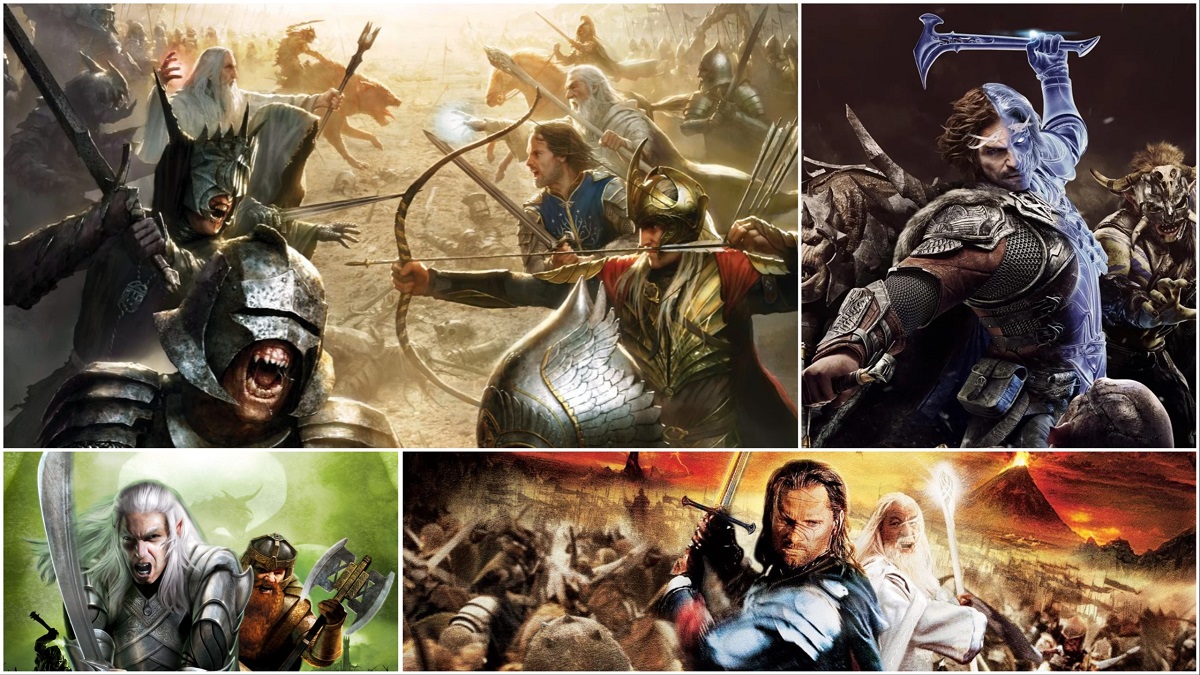
The History of The Lord of the Rings in Video Games
The Lord of the Rings in video games. That sentence has had a long and storied history, filled with ups and downs, twists and turns, and moments that we either want to remember forever or forget as fast as possible. Tolkien’s masterful work of art has seen a transformation into a multitude of different mediums over the years, from movies to television to even the radio. But there is one medium out there that is both artistically rich with creative opportunities and insanely popular to mass audiences, yet still feels incredibly underutilized in the world of Tolkien adaptations. That medium is video games.
The Genesis of Lord of the Rings Video Games
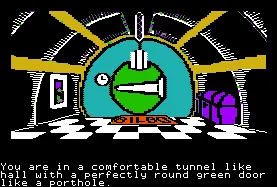
Video games and the Lord of the Rings have had a unique and complicated relationship since the very first Middle-earth game released back in 1982. One could say the same thing about Lord of the Rings and movies, but in my opinion, the difference between the two mediums is that while film has seen fewer entries in total, as well as a defining adaptation, video games have yet to yield a prominent and definitive iteration of Tolkien’s masterwork while also producing more entries in total. Yes, there have been some otherwise stellar games released over the last couple of decades, but none have reached that higher echelon of quality that we should expect from the Lord of the Rings IP. That said, I do want to take the time today to go over the unique entries from the last 40 years or so and give an honest look into the good, the bad, and the outright ugly history of the Lord of the Rings in video games. So, without any further ado, let’s begin.
As previously eluded to, Middle-earth video games started getting developed as early as the 1980s, when video games were still in their infant years and being heavily experimented with. In 1982, we saw the release of the very first Middle-earth game, The Hobbit, an illustrated text adventure title for home computers that adapted the beloved story into a new, interactive format. The game was created by Beam Software who would go on to make the next two Middle-earth games after that as well as two more a few years later. The two games that would follow The Hobbit were Lord of the Rings: Game One and Shadows of Mordor: Game Two of Lord the Rings. Those two were also illustrated text adventure titles that helped connect the three games into a trilogy. The games were received well both critically and commercially, with the first entry, The Hobbit, being the most successful game out of the bunch. The title sold over 500,000 units in Europe and even won the Best Strategy Award at the Golden Joystick Awards in 1983.
Another occurrence in 1983 was the cancellation of a game called The Lord of the Rings: Journey to Rivendell, in which the player would take control of Frodo Baggins in an attempt to make it to Rivendell safely within a 7-day time span without getting caught by the Black Riders. Not much else is known about the canceled game, but what we do know is that it was supposed to release on the Atari 2600 and feature characters such as Gandalf, Aragorn, Sam, and the aforementioned Frodo and the Black Riders.
The next game on the list is War in Middle Earth, a real-time strategy title developed by Synergistic Software in 1988. After that came The Crack of Doom by Beam Software in 1989. A title that wasn’t received as well as previous entries and didn’t garner much fan fair from either the fans or the critics. Next up is the first Middle-earth game to be made available on consoles as well as the first true RPG on this list thus far: J.R.R. Tolkien’s The Lord of the Rings, Vol 1. The game was released in 1990 for PC and was ported over to the SNES in 1994. It was middlingly received both critically and commercially, though it was seen as a good enough success for a sequel to be green-lit. Vol. 2 was developed and released just a few years later to a similar response as the first one, and as such, a Vol. 3 was never pursued.
Before the release of Vol. 2, however, another Middle-earth game came out called J.R.R. Tolkien’s Riders of Rohan. It was released in 1991 and was published by Konami, the publisher behind classic franchises such as Silent Hill, Castlevania, Contra, and, of course, Metal Gear Solid. This, along with the previously mentioned sequel to J.R.R. Tolkien’s The Lord of the Rings Vol. 1, would mark the end of Lord of the Rings video games for nearly ten years. It would also be the last Middle-earth game developed by Beam Software–the studio that started it all for Lord of the Rings in this particular medium.
The Vivendi Saga
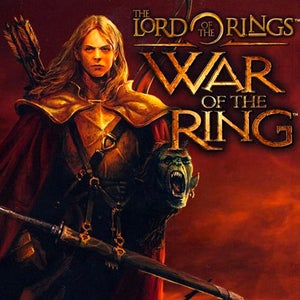
After this ten-year hiatus, Lord of the Rings video games returned to the market with an infamous entry in The Lord of the Rings: The Fellowship of the Ring. Developed by Surreal Software and WXP Games and published by Black Label Games, this linear, story-driven action-adventure title was released in 2002 to tepid sales and an absolute thrashing by game critics. The game was wholly based on the books and had no connection whatsoever to the Jackson films.
The story behind the game’s development is an interesting one as the game we got seems to be a far cry from the one that was originally planned. In the beginning, after Vivendi (the parent company who held partial gaming rights to the Lord of the Rings) partnered with the Tolkien Estate, the initial plans for the game were set around the title being an Xbox-exclusive RPG in the same vein as The Elder Scrolls: Morrowind. Plans changed after WXP Games expressed concerns that the game being an RPG might alienate the mass audience they wanted at the time. So they decided to make the game a third-person, action-adventure title instead. They also had a change of mind when it came to platform exclusivity. Instead of releasing solely on the Xbox, the game was developed and released on multiple platforms, including the PlayStation 2 and the Gameboy Advance.
Prior to release, Vivendi planned on making prequels, sequels, and spinoffs to the game. These titles were: The Hobbit, The Treason of Isengard, The Return of the King, The War of the Ring, and an untitled MMORPG. But after poor sales and low critic scores from its Fellowship of the Ring game, The War of the Ring (which we’ll get to shortly), and The Hobbit, plans for titles based on Fellowship’s sequels and the unnamed MMORPG were scrapped.
Now, as for the games Vivendi released after Fellowship–The War of the Ring and The Hobbit–those titles were swiftly disregarded by both fans and critics alike. Both received average to low scores on media sites, and the sales for both games were atrocious–especially when compared to the likes of EA’s officially licensed Two Towers and Return of the King titles (which I’m dying to talk about). The War of the Ring was a real-time strategy game that featured both a campaign and a multiplayer mode. As the title of the game suggests, it takes place during the late Third Age and features battles from Tolkien’s writings. It also creates totally new scenarios and battles for the player to experience and play. The game was released solely on Windows PC and was never ported to consoles.
The Hobbit by Vivendi was an entirely different game from its predecessors. Instead of being a real-time strategy title or a third-person action-adventure, the Hobbit played as your typical 3D “Super Mario” platformer but with way less charm, objectively worse gameplay, and more graphical bugs and glitches. The story of the game, much like Vivendi’s Fellowship, follows the book to a tee and hardly ever goes astray. For what it’s worth, it is interesting to see Tolkien’s first Middle-earth story get its chance in a different medium with 3D graphics. That said, maybe next time the creators should try a little bit harder to make not just a game but a game that is actually good.
A Breath of Fresh Air at Electronic Arts
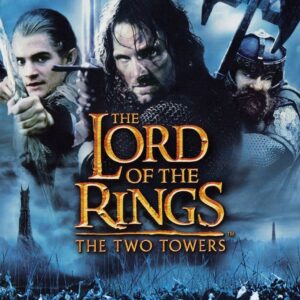
With that, the Vivendi saga ended (thankfully), and now we can start talking about the Lord of the Rings games that were developed by EA, starting off with The Two Towers and Return of the King. Now, unlike Vivendi’s titles, EA’s were not based squarely on the books and Tolkien’s writings but instead direct video game adaptations of Peter Jackson’s films. They were both hack-and-slash action games akin to popular game franchises such as Devil May Cry and the God of War series. Upon release, Two Towers was met with generally favorable reviews from critics and high praise from fans who helped the game to sell over 4 million copies (4x more than Vivendi’s Fellowship of the Ring). The game combined parts of the first film with sequences and scenarios from the second movie to better adapt the story to a different medium. By including both movies into one game, players could enjoy a swift, coherent, and, most importantly, complete version of the story.
When EA’s The Return of the King came out, a cool month before the release of the film, it too was met with high praise and even higher sales than The Two Towers. Building upon what was already a well-built foundation, The Return of the King was able to deliver more playable characters, better graphics, and a tighter gameplay loop that critics noted to be particularly strong and satisfying. Other added elements were the possibility of fighting more enemies than before and larger levels for the player to experience.
Some of the actors from the films also did voice work for the two games, including Viggo, who also recreated some of his famous fight scenes from the movies for the game to use.
After the film trilogy had ended, EA went back to the well to release yet again two more well-received games in The Lord of the Rings: The Third Age and The Lord of the Rings: The Battle for Middle-earth. Both of these titles offered significantly different experiences as opposed to EA’s prior entries. Instead of action hack-and-slashes, both The Third Age and The Battle for Middle-earth focused on strategic gameplay to get the player involved. With the Third Age, the player took control of an entirely new set of characters during the time of the War of the Ring. The game’s mechanics are very similar to the Final Fantasy series as it’s not only an RPG but the action is turn-based. Definitely a desired taste. Anyway, the game went on to sell moderately well and received favorable reviews from critics. The Battle for Middle-earth was the same in that regard. It was an unconventional big hit. And I say unconventional because, at face value, the game should’ve been seen as borderline poison to a more casual audience as it was a Windows PC exclusive, real-time strategy title that focused less on Peter’s films and more on Tolkien’s writings. And yet, it was a huge success, selling over a million copies worldwide and receiving 8/10’s across the board from reviews and critics.
EA quickly followed up with a sequel to Battle for Middle-earth in 2006, but not before releasing The Lord of the Rings: Tactics in 2005. Tactics, as the name suggests, was a tactical role-playing game released exclusively for the PlayStation Portable. The game featured notable battles from all three movies as the player took control of various characters. The game received mixed reviews, and, according to VGChartz, the game’s sales were not very good either, selling a disappointing 130,000 copies worldwide.
After Tactics, EA released The Battle for Middle-earth II to an even better reception than its predecessor. The game received better sales across the board and better review scores. It was praised for its gameplay additions and upscaled graphics. There were also more modes to play, characters to control, and scenarios to fight in. It was released on more than just Windows PC this time around as well, gaining a console port in the Xbox 360 a few months after the initial release.
A Council, a Conquest, and the Beginning of the End for LOTR at EA
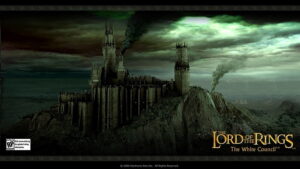
After this hot streak of releases for EA, they were bound to cool off at some point. Sadly, it probably wasn’t in the way most were expecting at the time, as EA would not only see the cancellation of their biggest Lord of the Rings game to date, The Lord of the Rings: The White Council, but also the failure of their second biggest Lord of the Rings title: The Lord of the Rings: Conquest by Pandemic Studios, the same creators behind the original Star Wars: Battlefront games. Both of these titles have unique histories as The White Council was supposed to be made by the studio under EA that made the beloved Return of the King and Third Age games: Redwood Studios, and Conquest was going to be made by the aforementioned Pandemic Studios.
For the White Council imparticular, its history is duly noted for being filled with promising ideas, such as an open world concept, RPG elements akin to the Elder Scrolls: Oblivion, a deeper look into Tolkien’s writings with a partnership with Christopher Tolkien, a unique and fully customizable playable character, and more. Concept art from the game also shows what was lost as the images seen here on IGN, show just some of the possible places a player could wander to while playing. Though the cancellation of the White Council still hurts many fans to this day (myself included), the failure of the Lord of the Rings: Conquest is what actually put the nail in the coffin for Lord of the Rings games at EA.
Thought of as being the next big thing for both EA and Lord of the Rings video games, Lord of the Rings: Conquest showed a lot of promise early on and had a lot riding on it. EA thought that putting Pandemic on a Battlefront-esque Lord of the Rings title would make for a surefire hit. The mere concept behind the game, while cookie-cutter, was still very intriguing for a mass audience. The game was going to print money for EA, but when it was released in 2009, the title was met with low critic scores and less-than-stellar sales numbers.
What went wrong? EA’s track record with the Lord of the Rings up to that point was nearly flawless. Pandemic Studios was an experience development team with a group of seriously talented developers. A large-scale Lord of the Rings action game was wanted by many and still is, and yet, the game was released in a half-baked, lazy, and seemingly incomplete state.
LOTRO and the Beginning of the WB Chronicles
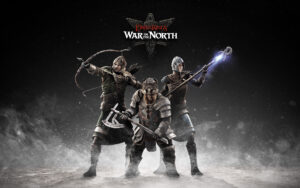
The Lord of the Rings: Conquest was a complete and utter disaster for EA, and sadly, they wouldn’t get another chance to right the ship as their partial rights to the Lord of the Rings video games fell into the hands of Warner Bros. Interactive Entertainment, the video game publishing arm to the greater Warner Bros. Discovery production company. This began a new saga for Lord of the Rings video games as over the course of the next decade, more than half a dozen Lord of the Rings titles would be developed and released under the brand. But before we get to those, there was one game released during this time period that wasn’t made by either EA or WB and is still around today. That game is called The Lord of the Rings: Online.
Beloved by many at the time of release, and still holding a strong fanbase today, Lord of the Rings: Online has had a long 15+ lifespan. It has seen plenty of ups and downs during that time, and while many MMORPGs have come and gone, LOTRO has always found a way to hang on. Though graphically dated, the game still carries a strong sense of love for the lore, gameplay mechanics reminiscent of the old World of Warcraft expansions, and a charisma and charm that is all but lost in many of the MMORPGs that have been released in the past decade or so. The game was and still is a critical darling and deservedly so, and the game doesn’t seem to be slowing down anytime soon as the game’s tenth expansion, Before the Shadow, was released just last year to praise by both fans and critics alike.
Now before I ramble on and on and on about LOTRO, let’s get back to the games released by Warner Bros. Interactive Entertainment. Starting off, we have the critically-maligned Aragorn’s Quest, a third-person action-adventure title that failed to capture an audience upon release. For many, the game was a waste. It was put together in a very short amount of time, and to just say it showed, would be an understatement. The graphics were awful. The gameplay was stagnant and repetitive. The story was uninspired and trivial. And the reason for its existence is still being questioned to this very day.
Things didn’t get any better for WB the following year as their next release, The Lord of the Rings: The War in the North, was critically and commercially panned. The game, which had a decent amount of anticipation prior to release, saw low review scores pour in from sites criticizing it for its shallow gameplay, uneven storytelling, lackluster level design, and derivative mechanics. The sales were awful too, as the game only sold around 750,000 units upon release. The game was a failure on all fronts, which is a shame because I think it’s actually a pretty solid title that blends fan fiction with Tolkien’s writings pretty well.
The Hobbit Years at WB
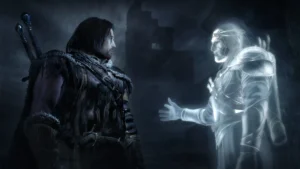
One year later in 2012, the same year An Unexpected Journey was released, Warner Bros. Interactive Entertainment released Guardians of Middle-earth, a MOBA with gameplay mechanics similar to that of DOTA 2 or League of Legends. Except, unlike those two games, Guardians of Middle-earth felt very limited and shallow, and while it did receive pretty okay critic scores, it did not do well commercially at all. The game is notable however for the team behind it, as Monolith Production, the studio that made the Shadow series, got their Middle-earth start here with this. I guess WB liked what they saw and gave them another chance. I’m glad they did.
Next up are a couple of Lego games: Lego the Lord of the Rings and Lego The Hobbit. Both of these games did pretty well both critically and commercially, though Lego Lord of the Rings did slightly better than its Middle-earth counterpart on both fronts. Not much really to talk about here. They’re both Lego games. Lego is awesome. Video games are awesome. The Lord of the Rings and The Hobbit are awesome. Everything is awesome! I will add though that a Lego The Hobbit: The Battle of the Five Armies game was in the works but was canceled. The creators of the Lego games also wanted to make a non-Lego Hobbit title but the idea didn’t get too far with WB. Sadly.
The last two entries in the WB saga, are the two most notable ones: Middle-earth: Shadow of Mordor and Middle-earth: Shadow of War. Lore controversies and microtransactions aside, these are probably the two most popular and well-regarded Lord of the Rings games to date. Filled with addictive gameplay, beautifully rendered graphics, strong cinematic cutscenes, interesting and likable characters, well-crafted semi-open worlds, and an innovative nemesis system, both Mordor and War deserved all the praise and accomplishments they received. As for those accomplishments, not only did the two games receive high critic scores and great sales, the first installment, Shadow of Mordor, was nominated and won buck-oodles of Game of the Year awards.
A New Generation for Lord of the Rings Video Games

The year after the release of Shadow of War, The Lord of the Rings: Adventure Card Game was released for consoles and PC. This began a new line of Lord of the Rings games made by companies and studios not named either WB or EA. While most of the games from this list are still in production, a few have indeed been released, one of which is the Adventure Card Game. The title, much akin to the fantasy card game Gwent (shout out to my Witcher fans), plays it simple and slow, but can still capture your attention if you let it. I recommend giving it a try if you haven’t already. It’s a fun little time waster that includes some great art on the cards and a warm atmosphere when playing.
The other game that has been released outside the realm of WB is none other than The Lord of the Rings: Gollum. Now I’m going to be straight up: there is nothing to say about this game that hasn’t already been said a thousand times. I would just be wasting both of our time if I tried to rattle off everything this game did wrong and how it became the butt of all jokes within the gaming community this year. So, I won’t.
Before we get to the last few games I wanted to talk about, I wanted to give a special shout-out to all the Lord of the Rings mobile games that have come out over the years. There are way, way, way too many to go over now, but let’s just say each one ranges from okay to bad to really bad to “Why am I doing this to myself?”
The Future of the Lord of the Rings in Video Games
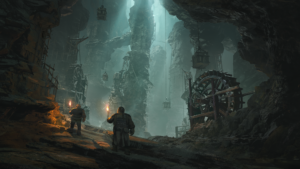
Anyway, to end it off, I wanted to talk about the three games currently in development from Free Range Games, Amazon Games, and Weta Interactive. The first of these games to be released is Free Range’s The Lord of the Rings: Return to Moria, releasing later this year for PC and consoles. The game gives you the chance to play as a Dwarf in the Fourth Age of Middle-earth whose looking to reclaim Khazad-dum from the grasp of evil. It’s multiplayer-based but also has a single-player mode as well. The game looks like a ton of fun and I cannot wait for the breath of fresh it will bring after what happened earlier this year with a game that must not be named.
The last two titles we know far less about as they are still years away. The game being by Amazon Games will be an MMORPG, much akin to LOTRO and, presumably, the canceled Lord of the Rings MMORPG from Amazon Games themselves from just a couple of years back. The game is being worked on by the team by Amazon’s original MMORPG New World and will be set in the Third Age of Middle-earth–unrelated to the Rings of Power. The other game is even more of an enigma as it’s being made by Weta Interactive and published by Private Division. All we know is that it will be more so based on the books rather than the films.
And that is all. That is the history of the Lord of the Rings in video games. Was there anything that surprised you when reading? Was there a canceled title that you wish was made or a game that you wanna try out? Let us know in the comments! Namárië!

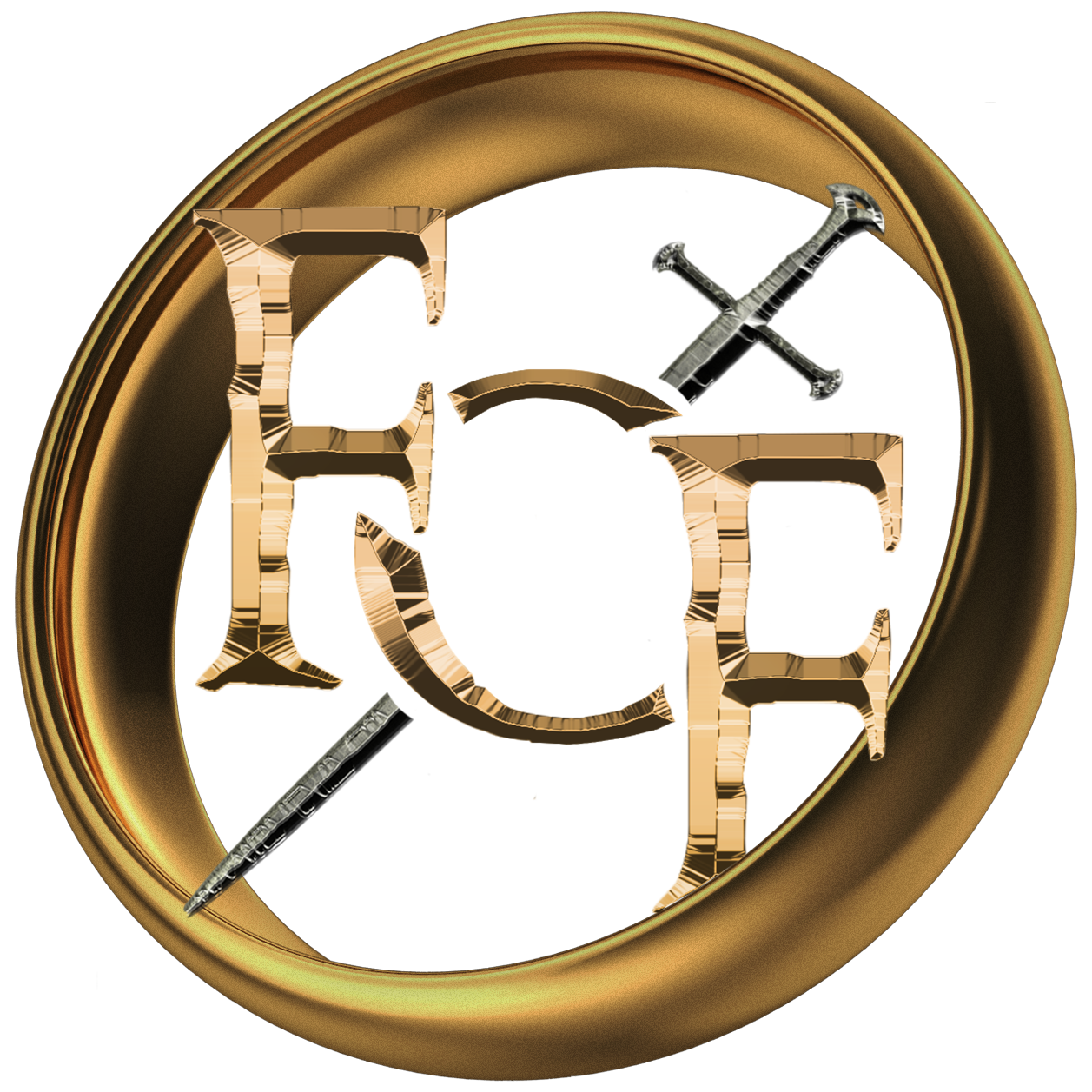


No Comments